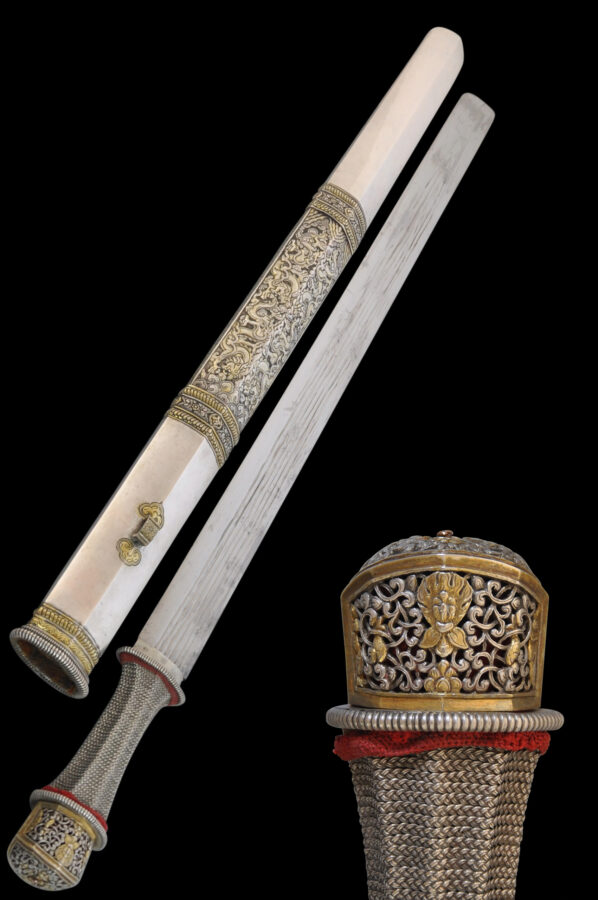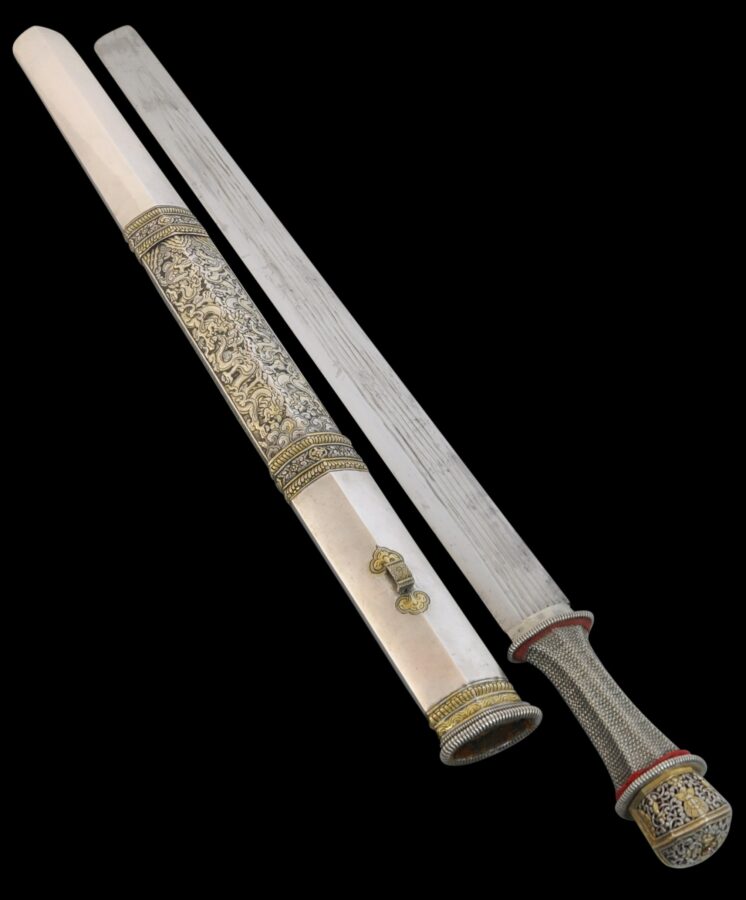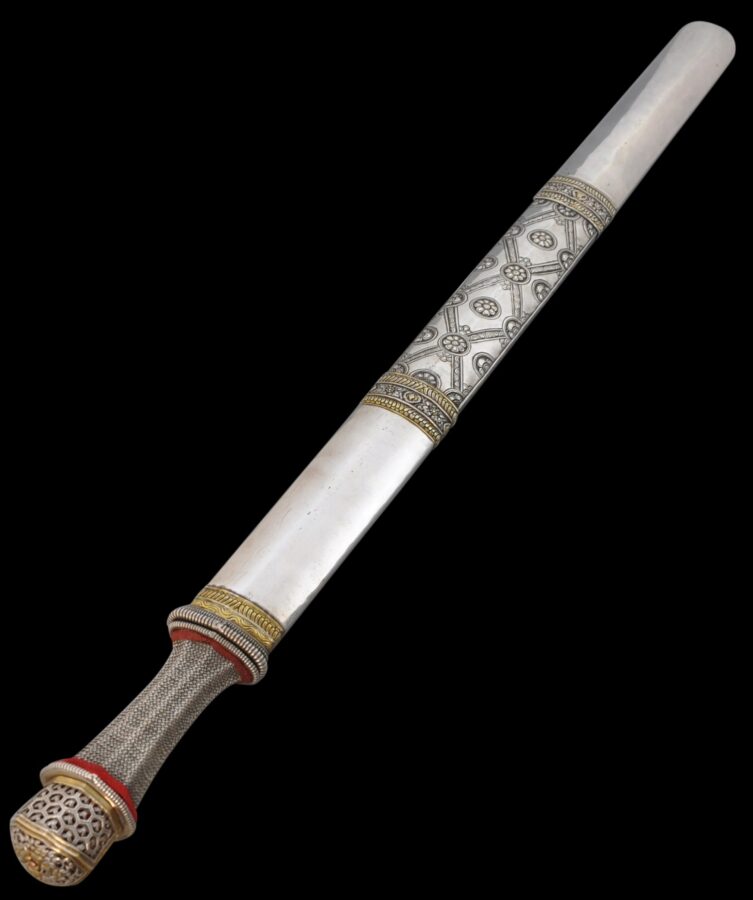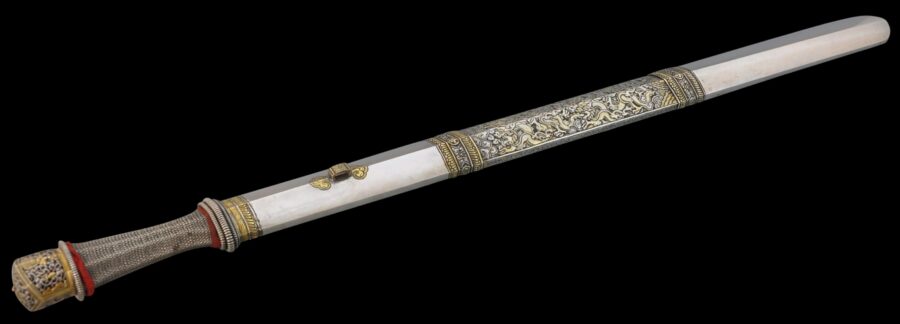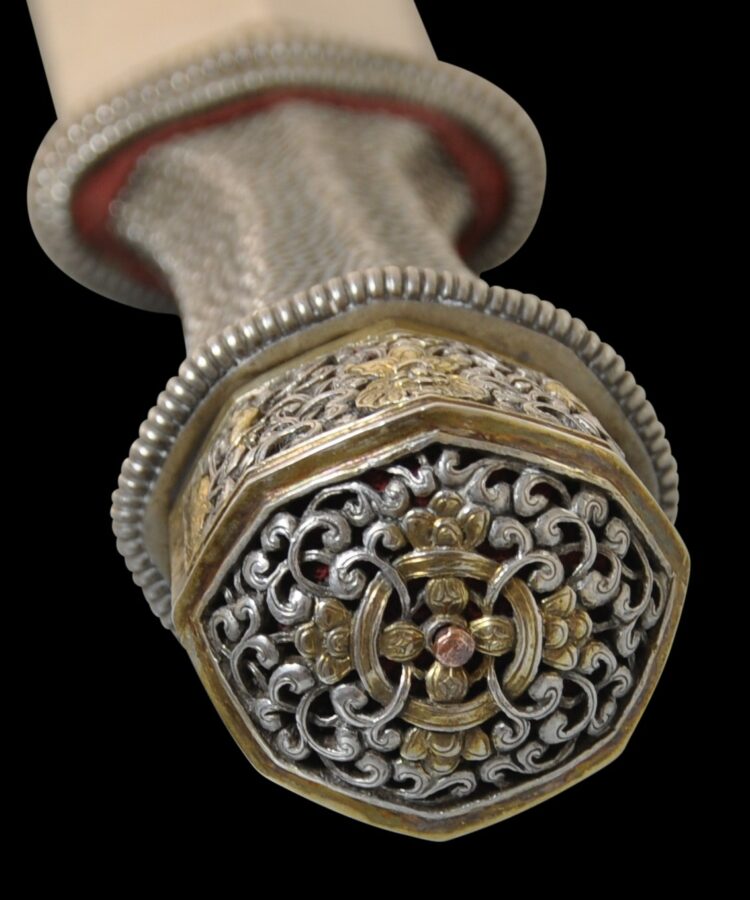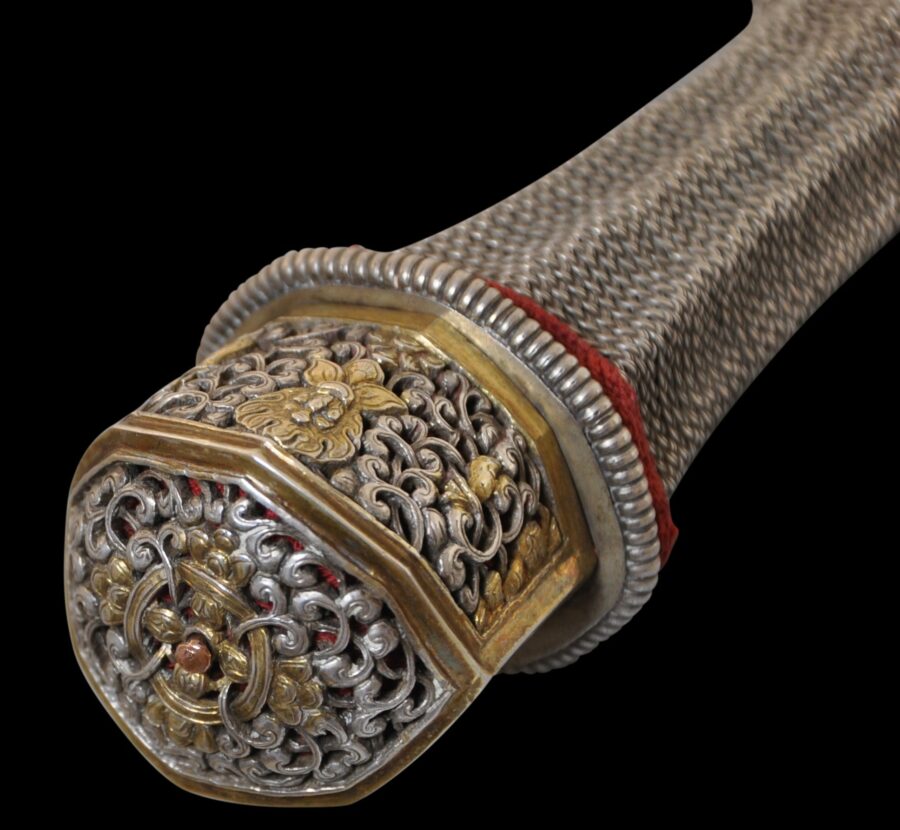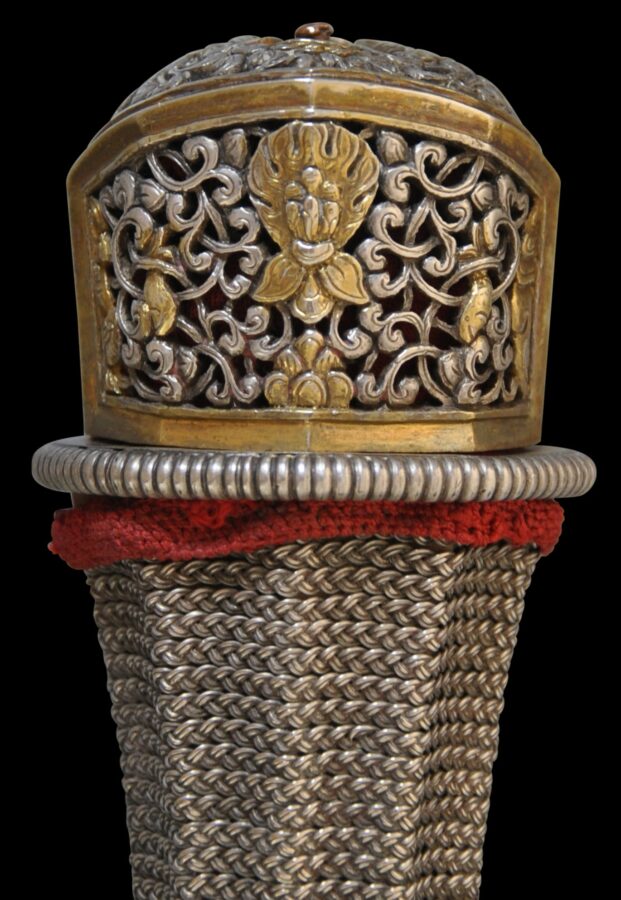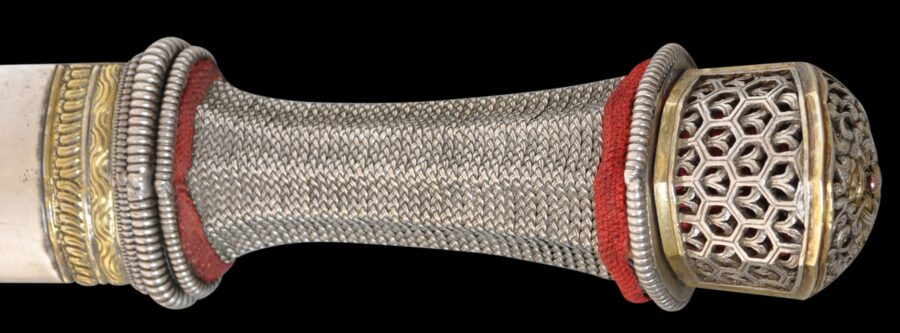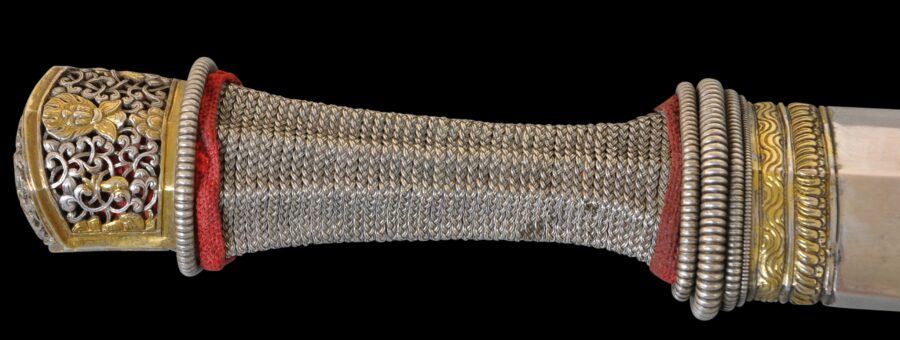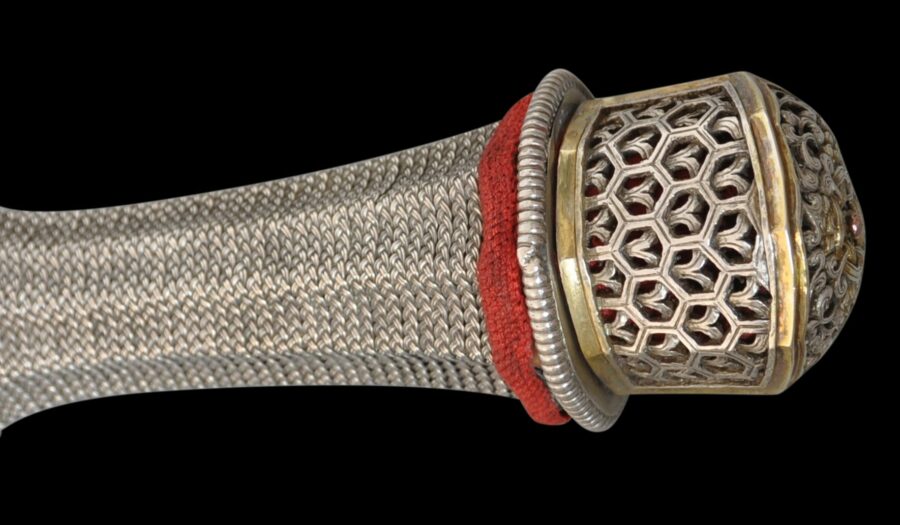This very fine, long sword intended for a male member of the Bhutanese royal family is a type of sword known in Bhutan as a kongdi maja – Bhutanese weapons tended to be named after their presumed place of manufacture and swords of this type were made in Kongpo (‘the country of ravines’) a region of Tibet that bordered Bhutan which was known for the great skills of its sword makers. Many of the weapons produced in this area were for the Bhutan market.
Such swords with scabbards fully encased in silver engraved in the manner here were worn by the king, royal family members and only the most senior Bhutanese officials. However, part of the engraving comprises a pair of dragons – and this is a sign that this particular sword could be worn only by a member of the royal family.
It has a forged, straight, single-edged steel blade; a scabbard encased in silver sheet that has been engraved, chased and parcel-gilded on both sides; a grip covered in beautifully twisted silver wire; and a cage-like, gilded, pierced pommel with Himalayan scrollwork on one side and a pierced ‘honeycomb’ pattern on the other. The grip retains its original thin red textile bands, top and bottom.
One side of the scabbard is decorated with a mid-section of parcel-gilt, flower motifs arrayed in a trellis formation. The reverse is decorated with a parcel-gilt panel of two elongated dragons amid Himalayan scrollwork.
Typically, such a sword was worn on the right hip.
The Metropolitan Museum of Art has a related example.
The sword and blade here is in excellent condition.
References
LaRocca, D.J., Warriors of the Himalayas: Rediscovering the Arms and Armor of Tibet, Metropolitan Museum of Art, 2006.
Myers, D., and S. Bean (eds), From the Land of the Thunder Dragon: Textile Arts of Bhutan, Serindia, 1994.
Thurman, R., & D. Weldon, Sacred Symbols: The Ritual Art of Tibet, Sotheby’s/Rossi & Rossi, 1999.


